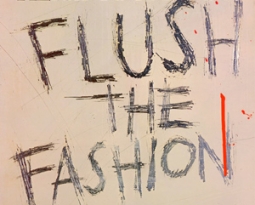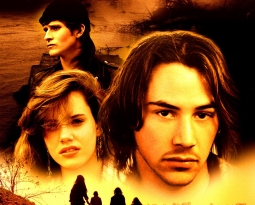
Paul Fitzgerald in Rollingstone.com: What a Filmmaker Can Teach Entrepreneurs About the Benefits and Pitfalls of Perfectionism
THERE ARE VARYING thoughts on perfectionism.
For some, it is an ideal practice. For others, it is the old adage: “Perfect is the enemy of good.” To others it is simply an unavoidable modus operandi; there is no real alternative to the pursuit of perfection.
There is no doubt as to where legendary filmmaker Stanley Kubrick stands in the debate.
Kubrick was notorious for his exacting methods. He holds the Guinness Book of World Records record for most retakes of a scene featuring dialogue for The Shining (148), and the longest constant film shoot for Eyes Wide Shut (over 15 months).
His prolonged shoots, extensive takes, and demanding sets have become part of film lore, drawing admiration and criticism alike.
However, the undeniable results are evident in his nearly flawless filmography, encompassing classics like 2001: A Space Odyssey, A Clockwork Orange, The Shining and Dr. Strangelove or: How I Learned to Stop Worrying and Love the Bomb.
In the realm of business, the pursuit of perfection can yield remarkable highs or lead to a downward spiral with charred wings.
Stanley Kubrick’s career offers valuable insights into the advantages and risks associated with perfectionism.
Auteur Theory
In film theory, auteur theory speaks of directors who make movies that are unmistakably theirs.
Kubrick embodied this, maintaining tight control down to the smallest details; however, he did not eschew collaboration.
In Full Metal Jacket, for instance, about fifty percent of Gunnery Sergeant Hartman’s colorful dialogue came from actor R. Lee Ermey, a former drill sergeant. Ermey came up with some 150 pages of insults, Kubrick told Rolling Stone during a 1987 interview promoting the film. Improvisation even made its way to the Overlook Hotel in The Shining, where Jack Nicholson ad-libbed the famous “Here’s Johnny!” line.
It is a good reminder for business owners who wish to maintain meticulous control, that they can do so without shunning collaboration. Even if you wish to have “final cut” so to speak when it comes to decisions, creating a workplace that welcomes the exchange of ideas can spark inspiration that may otherwise have been missed.
The Best Laid Plans
The consummate perfectionist, Kubrick’s meticulousness was not confined to film sets. His preparation is also the stuff of film legend. Sometimes those plans were realized as laid out.
But more often than not, flexibility in execution was necessary to realize his vision — a valuable lesson for business owners who frequently need to adapt to obstacles.
Kubrick’s preparatory methods were unprecedented. He consulted with NASA and other experts to ensure scientific accuracy on 2001: A Space Odyssey. While much of Kubrick’s preparatory work was utilized in the film, whose vision of space travel remains as awe-inspiring today as it was upon its 1968 release, others required more deviations.
When setting out to make what would become Dr. Strangelove or: How I Learned to Stop Worrying and Love the Bomb, Kubrick did not know he would be making a legendary black comedy. Instead, attempting to write a screenplay off of the serious-minded Red Alert by Peter George, Kubrick couldn’t help but find comedy in the ludicrousness of the situations described.
Creative differences over the film’s direction even led to Kubrick parting ways with longtime producer, James B. Harris. Kubrick arrived at the black comedy masterpiece despite his original intentions.
Kubrick’s long-lost Napoleon project is one of the great what-ifs in film history. Kubrick is said to have predicted his Napoleon film would be the best film ever made, instead, it is commonly thought of as the best film never made. Despite the film’s cancellation, Kubrick was able to utilize his period research to inform 1975’s Barry Lyndon.
These adjustments are emblematic of the importance of flexibility even among those with an auteur’s all-controlling vision. It’s a reminder to business owners that things won’t always go according to plan, regardless of how meticulously crafted it was.
The Method to His Madness
According to film lore, it wasn’t just the Torrance family driven to madness on the set of The Shining, with Kubrick’s auteuristic proclivities purportedly reaching new heights to the chagrin of some of the cast and crew.
Kubrick’s direction of Shelley Duvall, who played the female lead in The Shining, Wendy Torrance, has specifically come under scrutiny over the years.
The shoot for The Shining ran well over schedule, resulting in Duvall spending over a year in England away from her family. On top of the shoot’s fairly unsurprising timeline, some scenes were reportedly repeated ad nauseam until Duvall was nearly in tears.
The scene in which Wendy threatens Jack with a baseball bat allegedly tallied 127 takes (still not the aforementioned World Record which was set during the scene in which Dick Hallorann explains The Shining to Danny Torrance on the same set). It’s the part of Kubrick’s legacy that inspires contemporary think pieces questioning what type of behavior genius justifies. Setting that aside, what did such a seemingly ridiculous quantity of takes serve?
Stanley Kubrick, the auteur of all auteurs, was a collaborator: he tore up plans and made adjustments on the fly, and when it comes to his overlong shoots and his grueling retakes, there is, once more, a method to his madness.
Kubrick articulated his philosophy on his quantity of takes in his 1987 interview with Rolling Stone. Simply put, the actors didn’t know their lines. They could say their lines, they remembered their lines, but Kubrick saw their delivery as performative.
The actor’s act of remembering their lines rendered them incapable of fully conveying the emotion of the scene. So, he shot take after take. But it wasn’t just the performance that was built. Kubrick’s many takes also worked to develop the shot, the themes of the scene, and how it developed the characters and the story.
The perfectionist’s pursuit is not without reason. Perfect may well be the enemy of good, but for business owners who see areas for improvement, the pursuit of something better than good will be rewarded when implemented properly.







